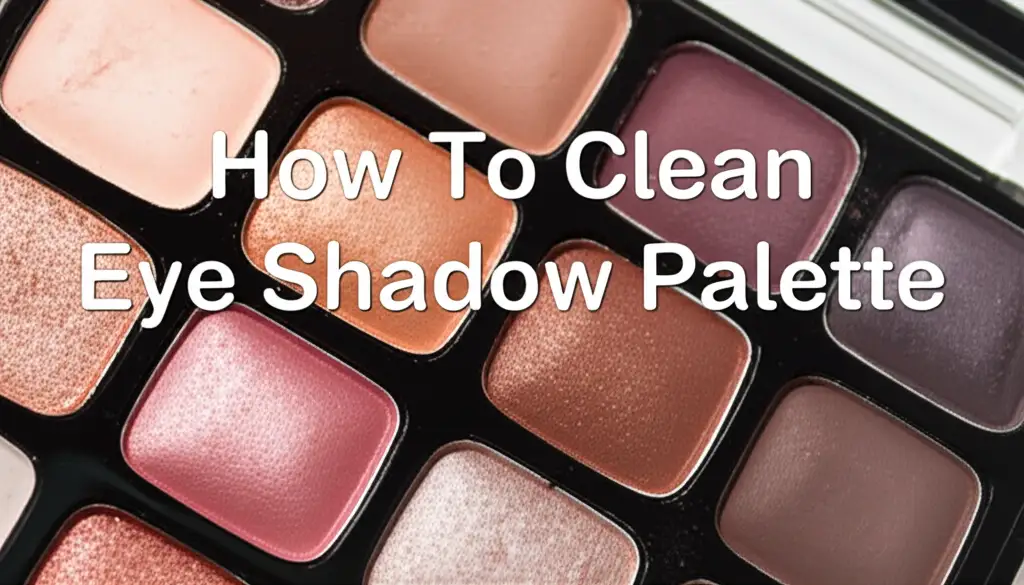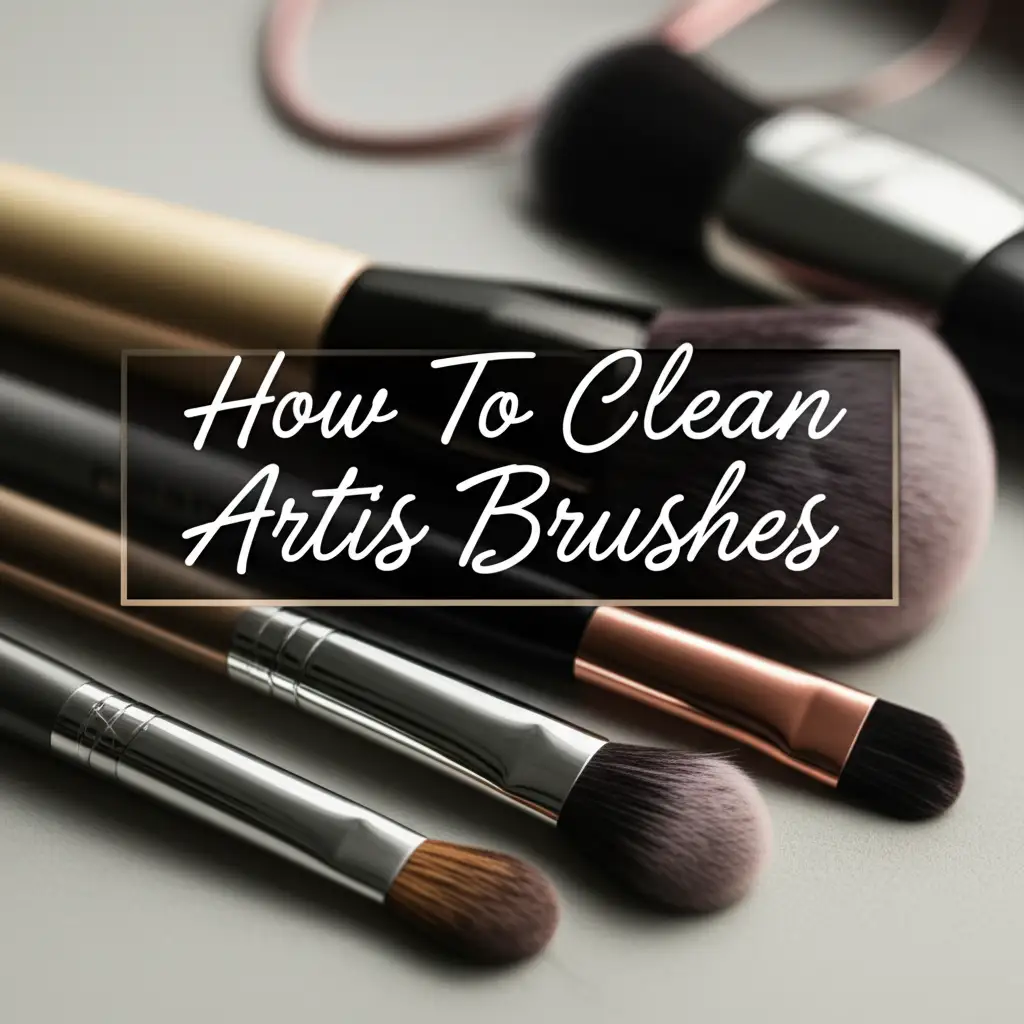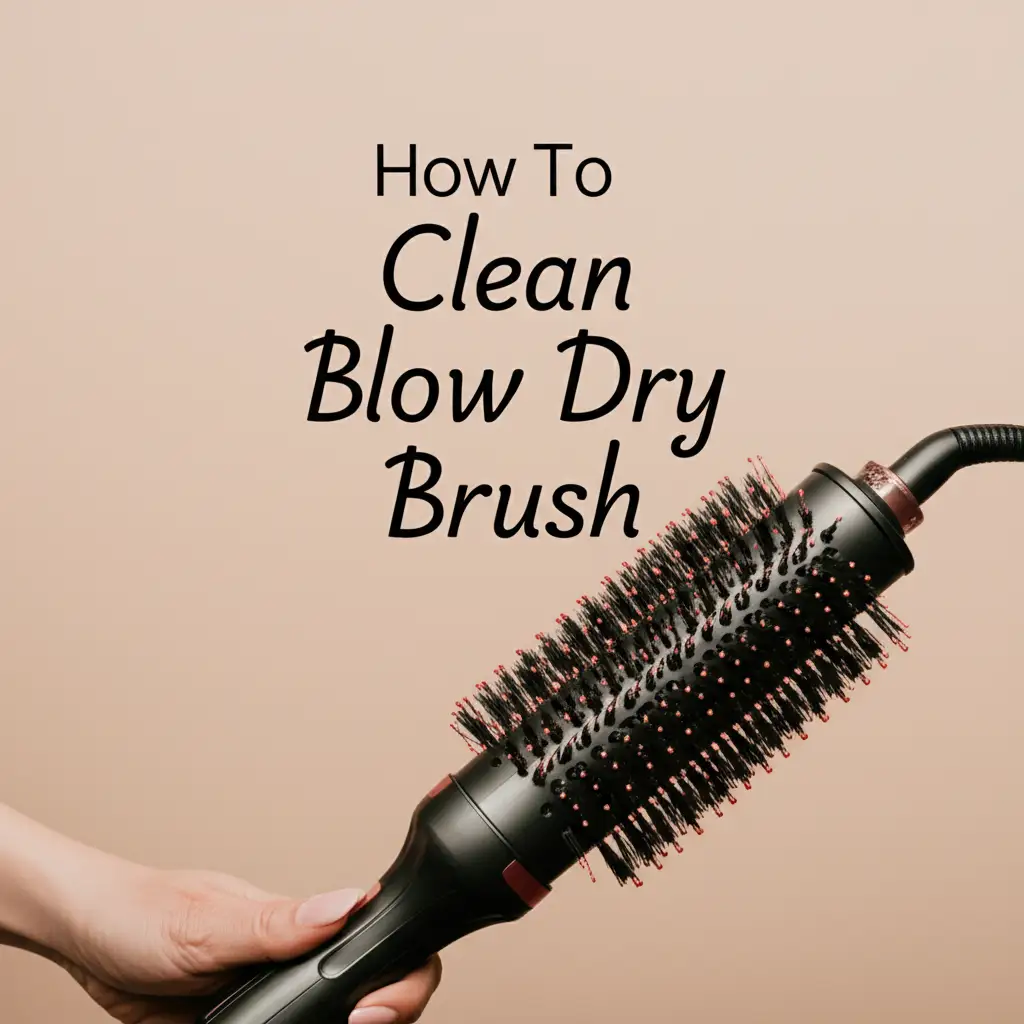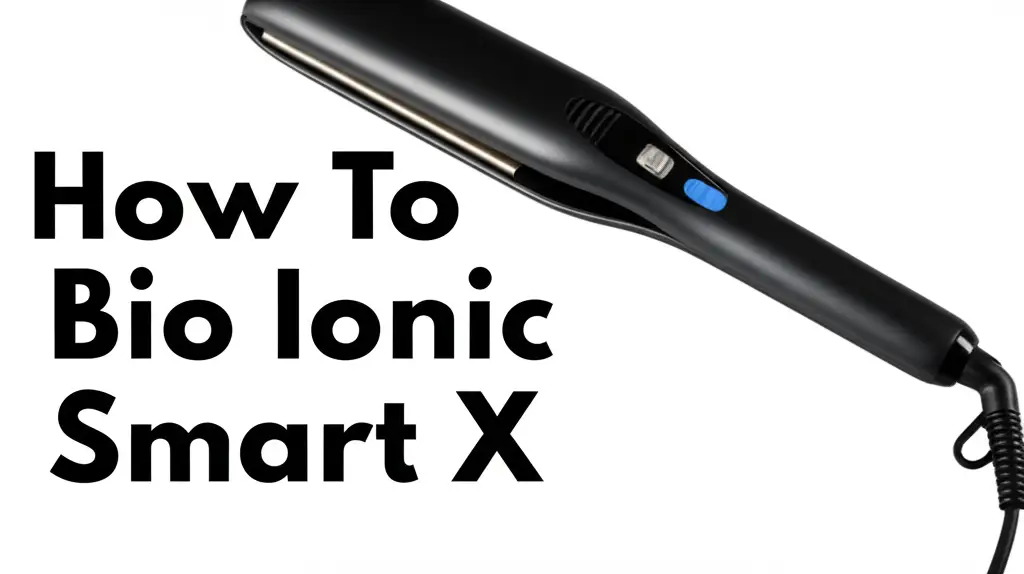· Beauty Hygiene · 15 min read
How To Clean Makeup Brushes With Alcohol
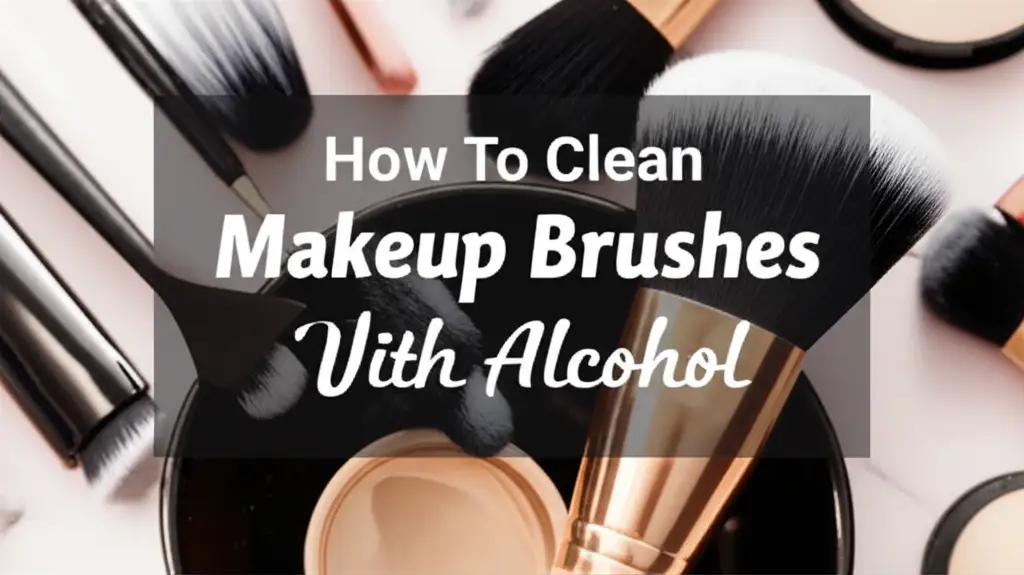
Clean Makeup Brushes with Alcohol: Your Essential Guide
Are your makeup brushes harboring hidden dirt and bacteria? Many people forget to clean their makeup brushes regularly. Dirty brushes can cause skin issues and affect how your makeup looks. Learning how to clean makeup brushes with alcohol helps you keep them hygienic. It also extends their life. This guide gives you simple steps to effectively sanitize your essential beauty tools.
I understand the importance of clean brushes for clear skin. This article provides a comprehensive guide. We discuss why alcohol is a good cleaning choice. We also share simple instructions. You will learn about the right alcohol type. We cover proper drying methods. By the end, you will have the knowledge to maintain sparkling clean brushes. Your skin will thank you for it.
Takeaway
- Alcohol is an effective disinfectant: It quickly sanitizes makeup brushes.
- Choose 70% Isopropyl Alcohol: This concentration kills germs without excessive drying.
- Spot clean regularly, deep clean periodically: Maintain brush hygiene with varied methods.
- Protect ferrules and dry brushes flat: This prevents damage and preserves brush shape.
Cleaning makeup brushes with alcohol sanitizes them quickly and effectively. It removes makeup residue, oils, and bacteria. You only need a small amount of rubbing alcohol and a few minutes. This method helps maintain brush quality and promotes healthier skin by preventing germ buildup.
Why You Should Clean Your Makeup Brushes Regularly
Your makeup brushes touch your skin daily. They pick up makeup, oils, dead skin cells, and bacteria. Over time, this buildup turns brushes into a breeding ground for germs. Using dirty brushes can lead to breakouts, skin irritation, and even infections. This is why regular cleaning is so important.
Unclean brushes also affect makeup application. Accumulated product makes bristles stiff and clumpy. This prevents smooth blending and even coverage. Your foundation might look streaky. Your eyeshadow might not blend well. Clean brushes perform better. They give you a flawless finish.
Regular cleaning also extends the lifespan of your brushes. Dirt and oils break down bristles over time. This makes them shed or fray. Proper washing keeps bristles soft and intact. It ensures your investment in quality brushes lasts longer. I find that my brushes feel brand new after a good wash. This saves me money in the long run.
Think about the hygiene aspect. You would not use a dirty sponge to wash your face. The same rule applies to makeup brushes. Keeping them clean protects your skin from harmful bacteria. It ensures a healthy beauty routine. This step is a small effort for a big reward.
Is Alcohol Safe for All Makeup Brushes?
Using alcohol to clean makeup brushes is effective. However, it is important to know which brushes are safe for this method. Not all bristles react the same way to alcohol. Understanding the differences helps you clean properly.
Most synthetic makeup brushes handle alcohol well. These brushes often use plastic or nylon fibers. They are durable. Alcohol evaporates quickly from these materials. This makes them ideal for quick sanitization. Many makeup artists use alcohol sprays for synthetic brushes between clients.
Natural hair brushes need more care. These brushes come from animal hair, like goat, squirrel, or sable. Natural bristles are more porous. They can dry out or become brittle with frequent alcohol exposure. Alcohol strips natural oils from these hairs. This can cause damage over time. For natural brushes, a gentle soap and water wash is often better for deep cleaning. Alcohol is suitable for light sanitizing only.
Consider the alcohol concentration. Isopropyl alcohol typically comes in 70% or 91% concentrations. For makeup brushes, 70% isopropyl alcohol is generally recommended. It has enough water to effectively break down oils and kill germs. It evaporates slower than 91% alcohol. This allows more contact time for disinfection. 91% alcohol can be too harsh. It may dry out bristles more quickly. It can also dissolve the glue holding the brush together.
Always perform a small patch test if you are unsure. Dip a small section of bristles into the alcohol. See how it reacts. Ensure the alcohol does not touch the ferrule. The ferrule is the metal part connecting the bristles to the handle. Alcohol can weaken the glue here. This makes bristles fall out. With proper use, alcohol is a safe and powerful tool for cleaning your brushes.
What You Need to Clean Makeup Brushes with Alcohol
Cleaning your makeup brushes with alcohol is simple. You do not need many items. Having the right supplies ready makes the process easy and efficient. I always gather everything before I start. This saves time.
Here is a list of what you will need:
- Isopropyl Alcohol (70%): This is the star ingredient. The 70% concentration is best for sanitizing. It kills germs effectively. It does not dry out bristles as harshly as 91% alcohol. You can find it at any pharmacy or supermarket.
- Shallow Dish or Plate: You need something to pour a small amount of alcohol into. A shallow dish or even a small plate works well. This allows you to dip only the bristles. Avoid deep containers. You do not want the alcohol to touch the ferrule.
- Paper Towels or Clean Cloths: These are essential for blotting the brushes. They absorb excess alcohol and makeup residue. Use several sheets. You will need fresh areas for each brush.
- Gentle Soap (Optional): For a deeper clean, especially on natural hair brushes, a gentle soap is useful. Baby shampoo or a mild brush cleanser works wonders. You might use this after the alcohol step. Alcohol sanitizes, but soap cleans away heavy makeup buildup.
- Drying Rack or Clean Surface: Brushes need to dry properly. A brush drying rack holds them upside down. This prevents water from seeping into the ferrule. If you do not have a rack, lay them flat on a clean towel. Ensure they are angled slightly downwards if possible.
Having these items prepared makes the cleaning process smooth. It ensures you can quickly and effectively sanitize your brushes. You are ready to give your makeup tools the care they deserve. This will improve your makeup application and keep your skin healthy.
Step-by-Step Guide: How to Clean Makeup Brushes with Alcohol
Cleaning your makeup brushes with alcohol is a quick process. It is great for regular sanitizing. Follow these steps for best results. I use this method often. It keeps my brushes fresh.
Prepare Your Workspace
First, find a clean, flat surface. Lay down several layers of paper towels. You will blot your brushes here. Ensure good ventilation. Alcohol fumes are strong. Open a window if possible. This prepares you for a safe and effective cleaning session.
Pour a small amount of 70% isopropyl alcohol into your shallow dish. You only need enough to cover the bristles. Do not overfill the dish. You want to avoid dipping the ferrule into the alcohol. Protecting the ferrule is very important.
Dip and Swirl
Take one makeup brush. Dip only the bristles into the alcohol. Swirl the brush gently in the liquid for a few seconds. You will see makeup and dirt come off the bristles. The alcohol quickly breaks down the makeup residue. It also kills bacteria.
Remove the brush from the alcohol. Gently press the bristles against the bottom or side of the dish. This helps release more product. Repeat this process for each brush. Focus on getting the bristles clean. For a detailed guide on using alcohol for cleaning electronics, check out our article on how to clean iPhone charging port with alcohol.
Blot and Reshape
After swirling, gently blot the brush onto the paper towels. Press firmly but do not rub harshly. You will see the remaining makeup come off onto the towel. Continue blotting until no more makeup comes off. The bristles should look clean.
Reshape the brush head while it is still damp. Gently squeeze the bristles into their original shape. This helps maintain the brush’s form as it dries. It prevents splaying. Proper reshaping ensures your brushes perform well. It also extends their life.
Proper Drying
Lay the clean, reshaped brushes flat on a clean paper towel or a brush drying rack. Ensure the bristles hang off the edge if using a flat surface. This allows air to circulate. Never stand brushes upright to dry. Water can drip into the ferrule. This weakens the glue. It can cause bristles to fall out.
Allow the brushes to air dry completely. This usually takes a few hours. Thicker brushes may need longer. Ensure they are fully dry before storing them or using them again. This prevents mildew growth. It also ensures the alcohol has fully evaporated. For cleaning other types of brushes, you might find our guide on how to clean hair brushes with hydrogen peroxide helpful.
Deep Cleaning vs. Spot Cleaning with Alcohol
Understanding the difference between deep cleaning and spot cleaning is key to maintaining good brush hygiene. Both methods use alcohol, but for different purposes. Knowing when to use each one helps you keep your brushes in top condition.
Spot cleaning with alcohol is for daily or every-other-day use. It removes surface makeup and sanitizes brushes quickly. After each use, or before a new application, you can do a quick spot clean. This prevents makeup buildup. It also keeps your brushes free from immediate bacterial growth. It is perfect for times when you need a specific brush clean right away. You dip the tip, swirl, and blot. It is simple and fast.
Deep cleaning involves a more thorough wash. While alcohol can sanitize, a full deep clean often includes a gentle soap and water rinse. This removes heavier layers of old makeup, oils, and deep-seated grime that alcohol alone might not fully break down. You typically deep clean your brushes once a week or every two weeks, depending on how often you use them. For instance, foundation and concealer brushes need more frequent deep cleaning than eyeshadow brushes. The alcohol step in a deep clean comes after the soap and water. It ensures complete disinfection.
I recommend a hybrid approach. Spot clean your most used brushes daily or every other day. This includes foundation, concealer, and powder brushes. Use alcohol for this quick sanitization. Then, once a week or bi-weekly, perform a deep clean on all your brushes. This involves a gentle wash with soap and water, followed by an alcohol sanitizing dip. This combines the cleansing power of soap with the disinfectant power of alcohol. This dual approach ensures brushes are not only clean but also truly germ-free. For different cleaning challenges, such as art supplies, you might find our article on how to clean paint brushes with mineral spirits informative.
Maintaining Brush Hygiene Between Cleanings
Cleaning your makeup brushes regularly is crucial. But what about the time between washes? Maintaining good hygiene every day helps keep brushes cleaner for longer. It also prevents dirt buildup. This minimizes the need for harsh deep cleans.
First, consider quick clean sprays. Many brands offer brush cleaning sprays. These sprays contain alcohol or other quick-drying solvents. You spray a small amount onto a paper towel. Then, gently swirl your brush on the towel. This removes light makeup residue. It is perfect for daily touch-ups or switching between colors. This method does not replace a deep clean. It extends the time between washes.
Proper storage is also key. After using your brushes, store them in a clean, dry place. Avoid leaving them exposed on a vanity. They can collect dust and airborne particles. A brush holder or a clean makeup bag works well. Ensure the storage container is also clean. If you use a bag, clean it regularly. This prevents transferring dirt back to your freshly cleaned brushes.
Avoid sharing your makeup brushes with others. This simple rule prevents the spread of bacteria and germs. Each person has different skin flora. Sharing brushes means sharing these microbes. This can lead to breakouts or infections. Keep your brushes for your personal use only.
Finally, keep your makeup products clean too. Dirty brushes can transfer bacteria to your makeup pans. This contaminates your powders and creams. Use clean spatulas or tools to scoop out products instead of dipping brushes directly into jars. Clean the surfaces of your compacts and palettes regularly. This holistic approach ensures everything in your makeup kit stays hygienic. It helps your brushes remain cleaner between their main cleaning sessions.
Common Mistakes to Avoid When Cleaning Brushes with Alcohol
Cleaning makeup brushes with alcohol is effective. However, mistakes can damage your brushes. They can also make the cleaning less effective. Knowing what to avoid helps preserve your tools. I learned these lessons through experience.
One common mistake is soaking the ferrule in alcohol. The ferrule is the metal part. It connects the bristles to the handle. Alcohol can dissolve the glue holding the bristles together. This causes bristles to shed. It also loosens the handle. Always dip only the bristles into the alcohol. Keep the ferrule dry.
Using too high a concentration of alcohol is another error. While 91% isopropyl alcohol is a strong disinfectant, it can be too harsh. It evaporates very quickly. This reduces its contact time for killing germs. It also dries out brush bristles more aggressively. Especially natural hair brushes. Stick to 70% isopropyl alcohol. It is effective for sanitization. It is also gentler on the brush fibers.
Improper drying methods harm brushes. Never stand wet brushes upright. Water or alcohol can seep into the ferrule. This weakens the glue. It also encourages mold growth inside the brush handle. Always lay brushes flat to dry. You can also use a brush drying rack that hangs them upside down. This ensures proper air circulation. It also keeps moisture away from the ferrule.
Neglecting regular cleaning is a big mistake. Even with alcohol’s sanitizing power, brushes still need frequent attention. Daily spot cleaning and weekly deep cleaning are important. Skipping cleans allows bacteria to build up. This makes brushes less effective. It also harms your skin. Consistent cleaning ensures your brushes stay hygienic and perform their best. For general cleaning questions, our article on how to clean with vinegar and baking soda offers insights into different cleaning agents.
FAQ Section
How often should I clean my makeup brushes with alcohol?
You should spot clean your most-used makeup brushes with alcohol daily or every other day. This removes surface makeup and sanitizes them quickly. For a deeper clean, which typically involves soap and water followed by an alcohol rinse for sanitization, aim for once a week. Brushes used for liquid foundation or concealer need more frequent attention.
Can I use alcohol to clean beauty blenders?
Using alcohol to clean beauty blenders is not recommended. Beauty blenders are porous sponges. Alcohol can dry out the material. This makes them brittle and prone to tearing. For beauty blenders, a gentle soap and warm water are best. Squeeze out excess water after washing. Let them air dry completely.
What type of alcohol is best for cleaning brushes?
70% isopropyl alcohol is best for cleaning makeup brushes. This concentration effectively kills bacteria and disinfects surfaces. It also contains enough water to prevent excessive drying of brush bristles. Higher concentrations, like 91% isopropyl alcohol, can be too harsh. They may dry out brushes more quickly or dissolve brush glue.
Will alcohol dry out my makeup brushes?
Yes, alcohol can dry out makeup brush bristles over time, especially natural hair brushes. This is why 70% isopropyl alcohol is preferred over 91%. To minimize drying, use alcohol primarily for sanitizing. Follow up with a gentle soap and water deep clean periodically. You can also condition natural hair brushes with a tiny bit of hair conditioner after washing.
Is it okay if I don’t rinse my brushes after using alcohol?
It is generally okay not to rinse your brushes after using alcohol for sanitization. Alcohol evaporates quickly. It leaves no residue. However, if you are deep cleaning with soap and then using alcohol, you must rinse the soap out first. The alcohol step is for disinfection after the initial cleanse. Ensure the brushes are completely dry before use.
Can alcohol remove stubborn makeup from brushes?
Alcohol is effective at dissolving many makeup products, including oils and pigments. It works well for quick removal of fresh makeup residue. For stubborn, caked-on makeup, especially from liquid or cream products, alcohol might need a little help. A pre-wash with gentle soap and water often breaks down heavy buildup. Then, use alcohol for thorough sanitization.
Conclusion
Taking care of your makeup brushes is a simple yet powerful step. It elevates your beauty routine. It also protects your skin health. Knowing how to clean makeup brushes with alcohol gives you a fast and effective way to sanitize them. You keep them free from germs and residue. This ensures flawless makeup application every time.
By regularly cleaning your brushes, you prevent skin breakouts. You extend the life of your valuable beauty tools. Remember to use 70% isopropyl alcohol. Focus on cleaning only the bristles. Always allow your brushes to dry completely and flat. These small actions make a big difference. Embrace this easy habit. Enjoy the benefits of clean, soft brushes. Your skin and your makeup will look better. Start cleaning your brushes today for a healthier glow!
- makeup brush cleaning
- alcohol cleaning
- beauty tool hygiene

